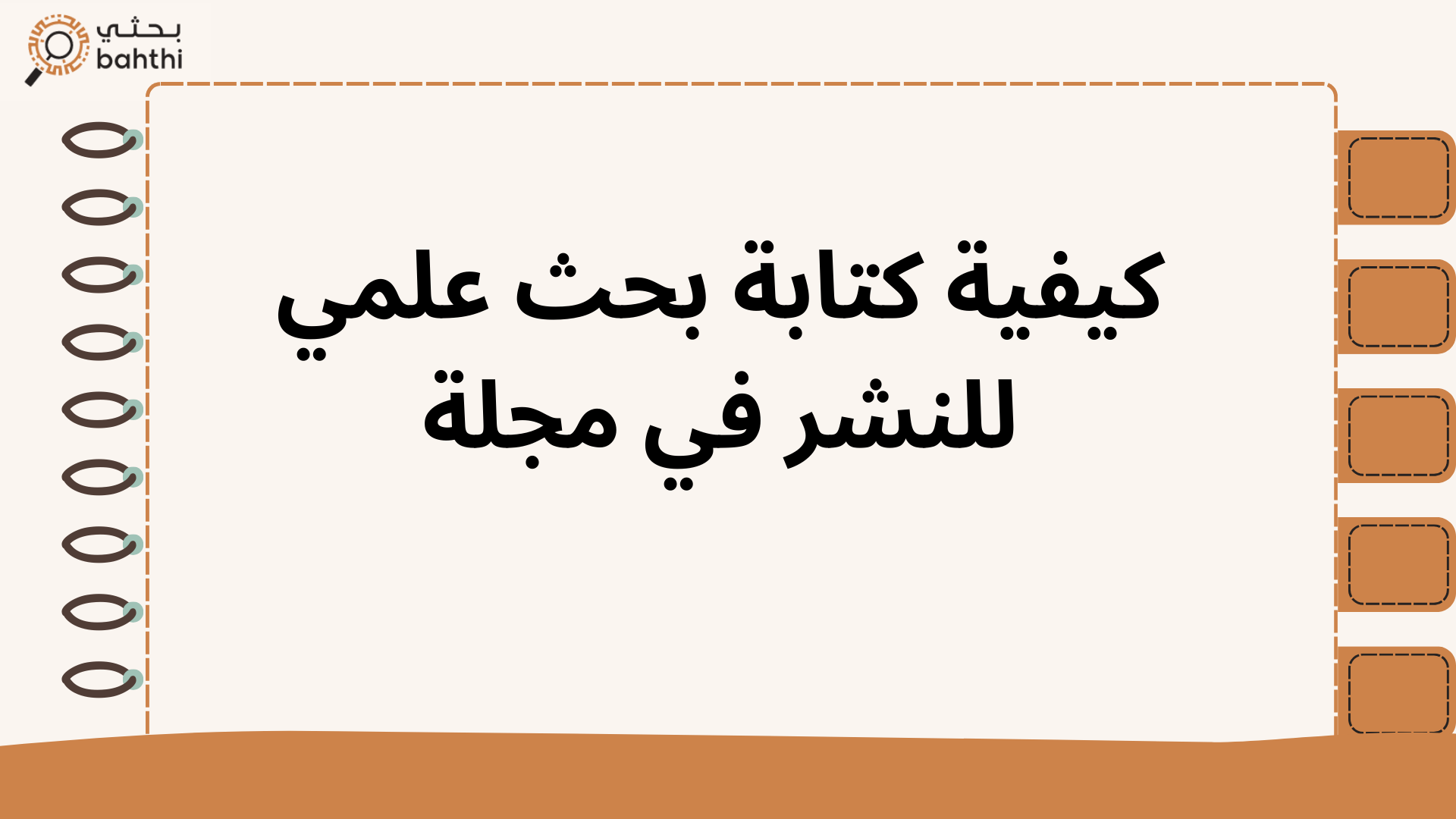

Publishing scientific research in a magazine - How to write correctly
It should attract the reader's attention, as the title should clearly reflect the topic of the research.
Write a summary of the research: Write a short summary of the research topic. The summary should summarize the most important points that will be addressed in the research.
Determining a strong research topic may take some time and effort. Do not give up if you do not find a suitable topic at first. Continue researching and thinking until you find a topic that interests you and contributes to scientific knowledge. If assistance is needed, do not hesitate to contact a research site so that we can provide you with advice on choosing The topic of your scientific research.
Building an effective research structure
Building an effective research structure is an essential step to ensuring clarity and consistency of the research. The research structure helps organize the research ideas and present them in a logical way. Therefore, it is very important to build an effective research structure that helps the reader understand the research easily.
Here are some steps to follow to build an effective research structure:
Define the main research sections: Define the main research sections, such as the introduction, references, and conclusion, and determine the number of subsections for each main section.
Define section titles: Define clear and concise titles for each section, and the titles should reflect the content of each section.
Arrange the research sections: Arrange the research sections in a logical manner. The sections must follow a logical sequence that helps the reader understand the research easily.
Determine the content of each section: Determine the content of each section of the research, what information you will present in each section, and how you will present this information.
Linking the research sections to each other: Link the research sections to each other using transitions. Transitions should help the reader move from one section to another smoothly.
Use graphs and tables: Use graphs and tables to explain complex information. Graphs and tables should help the reader understand the information easily.
Review the structure of the research: Review the structure of the research carefully for clarity and consistency, ensure that all sections are logically arranged, and that all information is presented clearly and concisely.
Consult experts in the field: Consult experts in your field to get feedback on the structure of the research.
Arts of documenting sources
Documenting sources is an essential step in any scientific or academic research. It helps ensure accuracy and integrity in the research, demonstrates your respect for the work of others, and gives readers the opportunity to verify the information you provide.
But, how can sources be documented properly?
Select the documentation style: There are many documentation styles, such as APA, MLA, and Chicago. Select the documentation style that you prefer or that a particular journal or organization requires.
Collect information: Make sure to collect all the information you need to properly document the source, such as: author’s name, book or article title, publisher’s name, year of publication, page number.
Writing references: Write references according to the documentation style you have selected, and be sure to write all information accurately.
Use documentation tools: There are many documentation tools that can help you document sources correctly, such as: Zotero, Mendeley, EndNote.
Review documentation: Review the documentation carefully to ensure it is free of errors.
Analyze the results and draw conclusions
Analyzing the results and drawing conclusions is an essential step in any scientific or academic research. It helps to understand the meaning of the results, link the results to previous studies, identify the most important results, and draw conclusions from the results.
Review the results: Read the research results carefully, and make sure you understand all the results.
Analyze the results: Use statistical tools to analyze the results, identify trends and patterns in the results, and compare the results to previous studies.
Drawing conclusions: Draw conclusions from the results, ensure that the conclusions are supported by the results, and identify the most important findings.
Writing the results analysis: Write the results analysis clearly and concisely, use simple and direct language, and make sure the results analysis is organized and easy to understand.
Clear and concise writing
Clear and concise writing is an essential skill in any field, especially in research and scientific fields.
It helps convey information clearly and effectively, avoids confusion and ambiguity, attracts the reader's attention and makes him focus on the information, and saves the reader time and effort.
Here are some steps to follow to write clear and concise text:
Determine your purpose for writing: what information you want to convey, and who is the target audience.
Plan the content of the text: Determine the main ideas you want to express, and arrange the main ideas logically.
Use simple, direct language: avoid complex words and technical terms, and use short, easy-to-understand sentences.
Write clearly and with focus: Make sure each sentence expresses only one idea, and avoid using long and complex sentences.
Review the text carefully: Make sure the text is free of spelling and grammatical errors, and make sure the text is clear and easy to understand.
Editing and reviewing the research
Review the research carefully: Read the research carefully to ensure that it is free of spelling and grammatical errors, and ensure that the research is clear and easy to understand, and that the information contained in the research is accurate.
Use editing tools: Use the editing tools available in word processing programs, such as checking for spelling and grammatical errors, checking writing style, and verifying the accuracy of information.
Seek help from an Arabic language expert: If you are not sure whether some words or sentences are correct, seek help from an Arabic language expert.
Review the research by colleagues or experts in the field: Ask colleagues or experts in the field to review the research and provide feedback on it.
Make the necessary amendments: After reviewing the research, make the necessary amendments to spelling and grammatical errors, writing style, and accuracy of information.
Submit your research to the magazine
Submitting research to a journal helps disseminate research results to the target audience, share scientific knowledge, and obtain evaluation from experts in the field.
Some steps that must be followed to submit the research to the journal correctly:
Select the appropriate journal: Select the journal in which research is published in your field of specialization, and make sure that the journal publishes high-quality research, and that the journal publishes research similar to your research.
Read the journal guidelines: Read the journal guidelines carefully to ensure that your research complies with the journal's requirements, ensure that your research is structured according to the journal's requirements, and that your research is written in the journal's language.
Prepare the research file: Prepare the research file according to the journal’s requirements, and ensure that the research file is organized and easy to read, and that the research file is free of errors.
Submit the research to the journal: Send the research to the journal via email or through the journal’s content management system, and make sure to send all required documents with the research.
Wait for the journal to respond: Wait for the journal to respond to your research. The journal may take some time to evaluate your research, and the journal may also ask you to make some amendments to your research.
Review the journal's response: If the journal asks you to make some modifications to your research, make the required modifications as soon as possible. Make sure that the modifications you make to your research comply with the journal's requirements.
Submit the edited manuscript to the journal: Submit the edited manuscript to the journal via email or through the journal's content management system, and be sure to send all required documents with the edited manuscript.
Wait for the journal's final decision: Wait for the journal's final decision on your research, and the journal may take some time to make the final decision.
Conclusion
In this article, we have discussed some of the most important steps that must be followed in writing scientific research and how to publish it, from defining the research topic to writing the conclusion, focusing on clarity and brevity. However, remember that the journey of scientific research is a long journey that requires patience and perseverance. Do not hesitate to request the service. From a research site so that you can achieve success in your scientific research journey.
read more:
Master's Thesis Formatting - 7 steps to bypass the discussion committee


